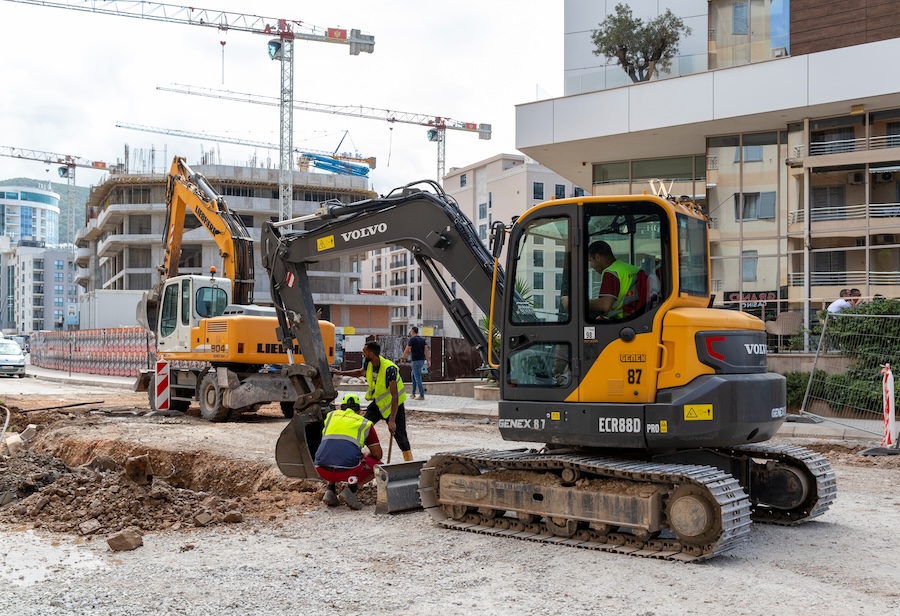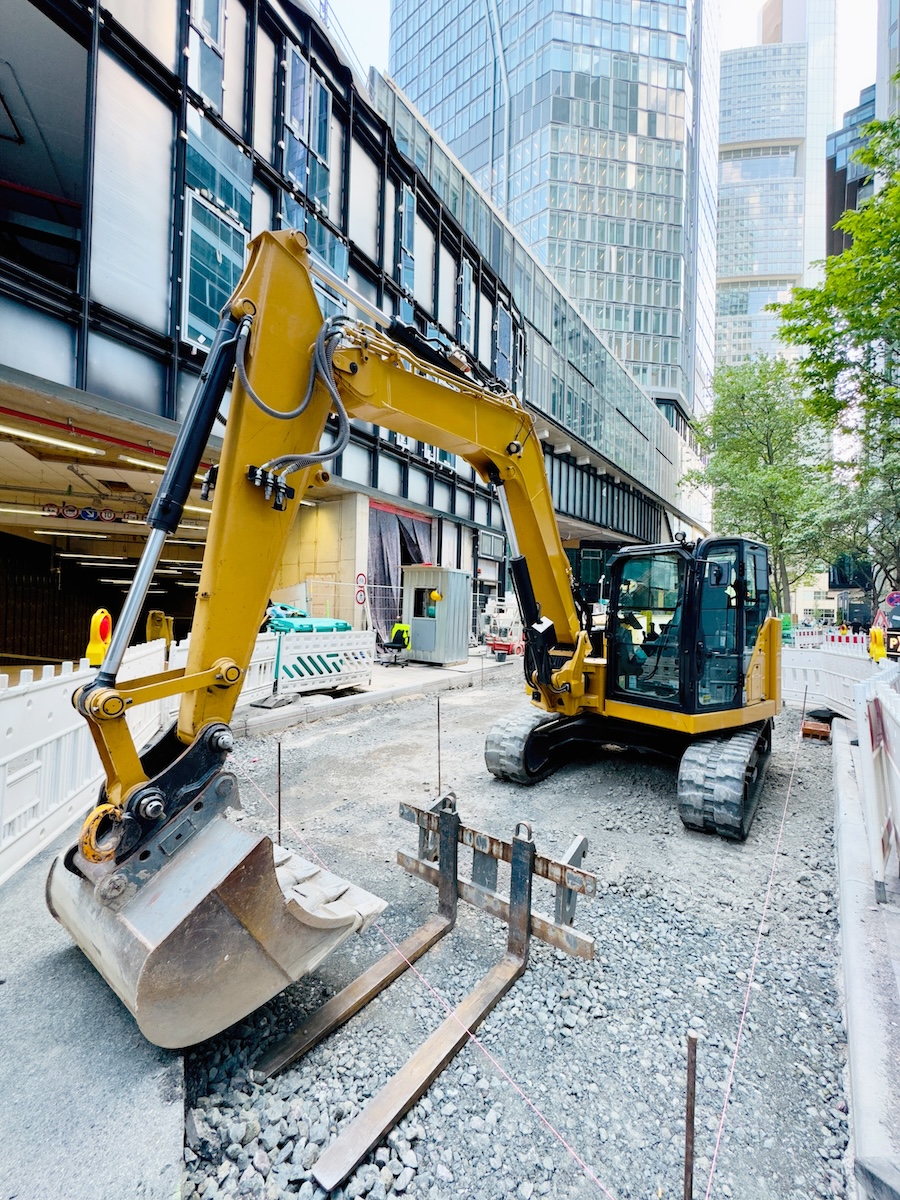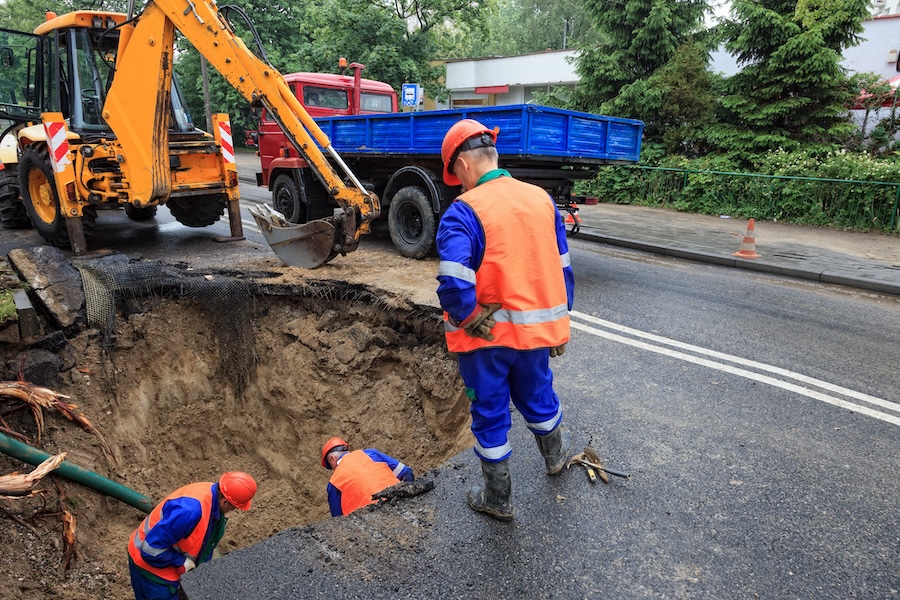
View the complete article here.
Excavating in urban environments presents a unique set of challenges for contractors. Unlike rural or undeveloped areas, cities are dense with buildings, utilities, traffic, and people—all factors that require careful planning and specialized approaches. In this guide, we’ll explore advanced techniques and best practices for earthmoving in urban settings—helping you navigate tight spaces, minimize disruptions, and maintain safety standards.
Planning and Permitting: Starting with a Detailed Strategy
Before starting any excavation project in an urban area, thorough planning and securing the necessary permits are essential. This step involves:
- Conducting a site assessment: Evaluate the site for space limitations, surrounding structures, and underground utilities. Using ground-penetrating radar (GPR) or utility mapping services can help identify potential hazards.
- Coordinating with local authorities: Engage with city planning departments and utility companies early on to secure permits and approvals. This will prevent costly delays and legal issues.
- Developing a traffic management plan: In busy urban areas, traffic disruption can be a major issue. Create a plan for vehicle and pedestrian traffic—including detours, signage, and safety barriers.

Selecting the Right Equipment for Urban Excavation
Choosing the correct earthmoving equipment can make all the difference in a confined urban job site. Key considerations include:
- Compact and maneuverable machines: Mini excavators, skid steers, and compact loaders are ideal for urban environments due to their small footprint and ease of maneuvering in tight spaces.
- Zero-tail swing excavators: These models are designed to operate with minimal overhang, reducing the risk of damaging nearby structures.
- Multi-purpose attachments: Opt for versatile attachments like grapples, augers, and hydraulic breakers that allow you to switch between tasks quickly without needing multiple pieces of equipment.
Noise and Dust Control: Keeping Disruptions to a Minimum
In urban settings, noise and dust from excavation can quickly lead to complaints from residents and businesses. To mitigate these issues:
- Use noise-reducing equipment: Look for equipment models designed with quieter engines and noise-dampening features. Installing sound barriers around the job site can also help.
- Water sprays and misting systems: Use water sprays or misting systems to suppress dust, especially when breaking ground or moving dry materials.
- Schedule work wisely: Plan the noisiest activities for times when they will have the least impact, such as late mornings or early afternoons when fewer people are nearby.
 Protecting Underground Utilities: Avoiding Costly Damage
Protecting Underground Utilities: Avoiding Costly Damage
Urban excavation projects are often complicated by the presence of underground utilities like water lines, gas pipes, and electrical cables. To avoid costly damage and delays:
- Utilize utility mapping and detection tools: Use advanced tools like GPR, electromagnetic locators, and utility maps to accurately locate underground assets before digging.
- Hand digging and vacuum excavation: In areas where utilities are expected, consider hand digging or using vacuum excavation for safe exposure of sensitive lines.
- Implement a utility marking system: Clearly mark identified utility lines using industry-standard colors and ensure that all workers on site are aware of these markings.
Efficient Material Handling and Removal
Handling and removing excavated material can be challenging in crowded urban areas. Here are some strategies to streamline this process:
- Use conveyor systems: For sites with limited space, consider using portable conveyor systems to transport materials from the excavation area to a loading zone.
- Plan for night or off-hour hauling: Schedule material removal during off-peak hours to reduce traffic congestion and avoid disruptions.
- Recycle on-site where possible: Crushing and reusing excavated material, such as concrete or asphalt, can reduce the need for hauling and disposal while also cutting project costs.

Safety Measures: Protecting Workers and the Public
Safety should always be a top priority, especially in urban environments where the risk of injury or property damage is higher. Key safety measures include:
- Erecting protective barriers: Set up strong fencing or barriers around the excavation site to keep pedestrians and vehicles at a safe distance.
- Implementing fall protection: Ensure that fall protection measures are in place for workers, particularly when working near deep trenches or elevated edges.
- Continuous monitoring: Use surveillance cameras or on-site safety officers to monitor the area for hazards, unauthorized access, or other safety concerns.
Conclusion
Excavating in urban environments requires a blend of strategic planning, specialized equipment, and careful execution. By utilizing these advanced techniques, contractors can successfully navigate the complexities of city-based projects—minimizing disruptions while ensuring safety and efficiency.
View the complete article here.
What is the best equipment for excavation in urban environments?
Compact equipment like mini excavators, skid steers, and zero-tail swing excavators are ideal for tight spaces. How can noise and dust be controlled during urban excavation projects?
Use noise-reducing equipment, water sprays, and schedule noisy tasks during less busy times.













































